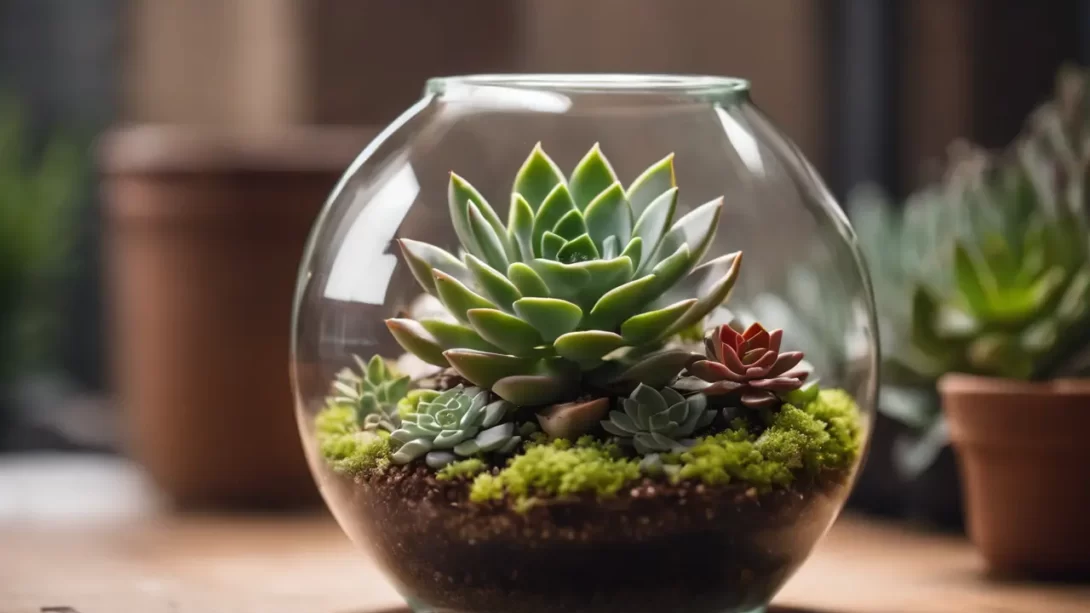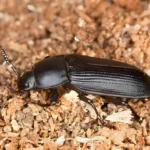Succulent terrariums have become a trendy and delightful way to bring a touch of nature into homes and offices. These miniature landscapes, nestled within clear containers, offer a unique and low-maintenance option for plant enthusiasts. This article aims to guide you through creating your very own succulent terrarium, from selecting the right materials to the final touches that make your miniature garden truly one-of-a-kind.
Succulents and Terrariums
Succulents are plants that store water in their leaves, stems, or roots, which gives them a distinct and varied appearance. They are well-loved for their resilience and minimal water needs, making them ideal for terrarium environments. A terrarium, essentially a small, enclosed environment for growing plants, can be an excellent home for succulents, especially when proper care is taken to ensure a suitable habitat. The closed space creates a unique microclimate that can benefit these drought-resistant plants.
Materials and Tools Needed
To begin, gather all the necessary materials and tools. You will need:
- A clear glass container, such as a jar, vase, or bowl.
- A variety of succulents, considering their size and growth habits.
- Potting soil specifically formulated for succulents and cacti.
- Small rocks or gravel for drainage.
- Activated charcoal to keep the soil fresh.
- Decorative elements like sand, stones, or figurines (optional).
- Tools such as tongs or tweezers for placing plants, a spoon or small shovel for soil, and a small watering can or spray bottle.
Choosing the Right Container
The choice of container is crucial in creating a successful succulent terrarium. While almost any clear glass container can work, it’s important to consider size and shape based on where you plan to display it. Open terrariums are ideal for succulents as they allow for more air circulation, reducing the risk of moisture buildup that can harm the plants. Closed terrariums can be used but require careful monitoring to ensure they don’t become too humid. A container with a wide opening is also beneficial for ease of planting and maintenance.
Selecting Succulents
When choosing succulents for your terrarium, variety and compatibility are key. Select plants that will thrive in the same type of environment. Consider different sizes, shapes, and colors to create an appealing visual landscape. It’s important to choose succulents that have similar light and water needs. For example, mixing desert and tropical succulents might not be ideal due to their differing requirements. Look for small succulents that won’t outgrow the container quickly. Popular choices include Echeveria, Haworthia, and Sedum species.
Creating the Terrarium
Preparing the Container
Start by thoroughly cleaning your container to remove any dust or debris, as a clean environment is crucial for the health of your succulents. Ensure the container is completely dry before you begin layering materials.
Layering the Terrarium
- Drainage Layer: Begin with a layer of small rocks or gravel at the bottom of the container. This layer ensures proper drainage, preventing water from pooling at the roots of the plants.
- Activated Charcoal: Add a thin layer of activated charcoal over the gravel. Charcoal helps to filter the air and water within the terrarium, keeping it fresh and reducing the growth of bacteria and fungi.
- Soil Layer: Next, add a layer of succulent or cactus potting mix. This soil is formulated to drain well and retain the right amount of moisture for succulent roots.
Planting the Succulents
Carefully remove the succulents from their pots and gently loosen the roots. Using tongs or tweezers, place each succulent in the terrarium, arranging them in a visually pleasing manner. Be mindful of the plants’ future growth – leave space for them to expand. Plant the tallest or largest succulent first, followed by smaller ones. Once all plants are in place, you can gently add more soil around them using a spoon or small shovel, ensuring the roots are well covered.
Adding Decorative Elements
After planting the succulents, you can add decorative elements like colored sand, pebbles, or miniature figurines. These elements can enhance the aesthetic of your terrarium but should be used sparingly to avoid overcrowding the space. This is also an opportunity to showcase your personal style and creativity.
Aftercare and Maintenance
Proper care is essential to keep your succulent terrarium healthy and thriving. Succulents in terrariums require minimal watering. Use a spray bottle to lightly mist the soil every two to four weeks, depending on the humidity in your home. Avoid overwatering, as succulents are prone to root rot in excessively damp conditions. Place the terrarium in a location where it can receive bright, indirect sunlight. Direct sunlight can be too intense, causing the glass to heat up and potentially scorch the plants.
Regularly check for signs of stress in the plants, such as discoloration or wilting, which could indicate either too much or too little water. Also, watch for signs of pests or diseases and address them promptly. As the succulents grow, you may need to prune them to maintain a tidy appearance and prevent overgrowth.
Troubleshooting Common Issues
Even with careful attention, you may encounter some challenges. Overwatering is a common issue, leading to root rot. If you notice the leaves turning yellow or mushy, reduce your watering frequency. Conversely, under-watered succulents may start to shrivel. Increase your watering slightly if this occurs.
If the plants are not receiving enough light, they may begin to stretch towards the light source. If this happens, move your terrarium to a brighter spot. Be cautious of too much direct sunlight though, as it can burn the leaves.
Pest infestations, while rare, can occur. If you notice pests, isolate the affected plant and treat it with a suitable insecticide or natural remedy.
Conclusion
Creating a succulent terrarium is a rewarding and enjoyable project. Not only does it bring a piece of nature into your indoor space, but it also allows for creativity and personal expression. With the right selection of plants, a suitable container, and proper care, your succulent terrarium can be a beautiful, living piece of art that thrives for years to come. Remember, the key to a healthy terrarium is balance – in watering, lighting, and spacing. Enjoy the process of creating and nurturing your miniature ecosystem!



